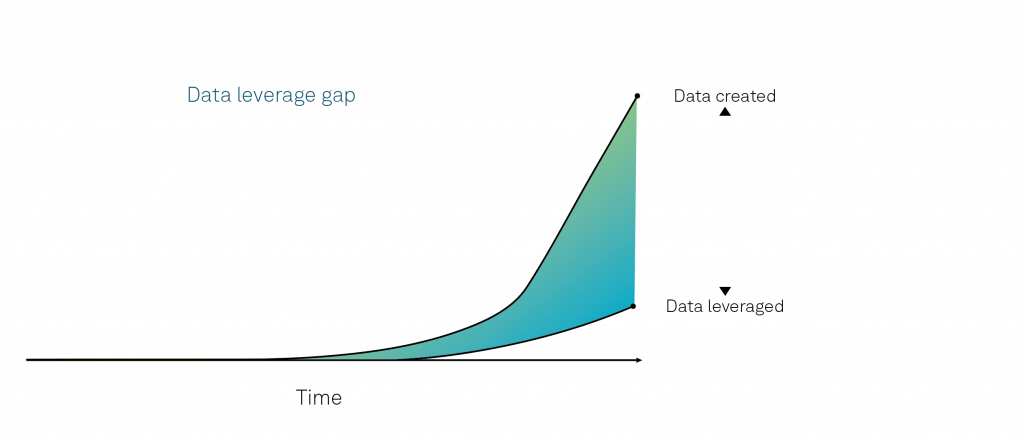Commercial construction projects generate a substantial volume of assets — a widely cited statistic on this topic estimates the number to be around 197 million per project. These assets, including images, videos, change orders, punch lists, building information model (BIM) files, emails and memos, produce many terabytes of data that — if properly collected, stored, organised and analysed — can reveal powerful insights about a project throughout its entire lifecycle, from design conception to commissioning and handover.
However, humans alone can’t process the mountains of data generated on a construction project in a comprehensive and valuable way. The result is underleveraged data that sits unused — or is lost completely — in disconnected systems. This is what we call the data leverage gap. This ever-widening chasm stands between the data created during the lifecycle of a building project and the data used to produce meaningful insights that drive better project outcomes.
Closing the data leverage gap can be achieved by automating the production, collection, analysis and distribution of construction project data.
Streamlining data collection and analysis
Consider the process of jobsite productivity monitoring, for instance. Reality capture technology, including cameras, sensors and scanners, collects real-time information about the surrounding environment, eliminating the need for workers to physically walk the site, record footage and manually upload the data for analysis. Recent advancements in autonomous reality capture have led to the development of robotic scanners that can navigate the site without human intervention. Equipped with artificial intelligence (AI) functionality, these scanners — such as the BLK ARC and BLK2FLy — learn the environment, dynamically navigate obstacles and capture the world around them.
The robotic scanners can then automatically upload images, videos and other assets to progress-monitoring software to detect deviations, issues or conditions the system has been programmed to identify.
But how does this help close the data leverage gap?
Besides enhancing data quality, autonomous systems organise the real-time, highly accurate data they collect into a common data environment, serving as a single source of truth for all stakeholders. AI can then analyse and interpret the data, enabling systems and stakeholders to extract meaningful insights that can be transformed into action — such as identifying a leak in a utility room that could cause significant damage if not promptly addressed.
Learn how autonomous technology can help close your firm’s data leverage gap
To gauge the influence of autonomous technologies on the construction sector, Hexagon recently conducted a survey, gathering insights from over 1,000 technology leaders, including nearly 300 executives. The findings have been compiled into a report titled “Achieving better project outcomes through autonomy”.
Explore the Autonomous Construction Tech Outlook today to uncover the ways in which the construction industry is utilising autonomous technologies to address challenges and achieve business objectives, as well as to gain insight into the industry’s progress on its autonomous journey.



















